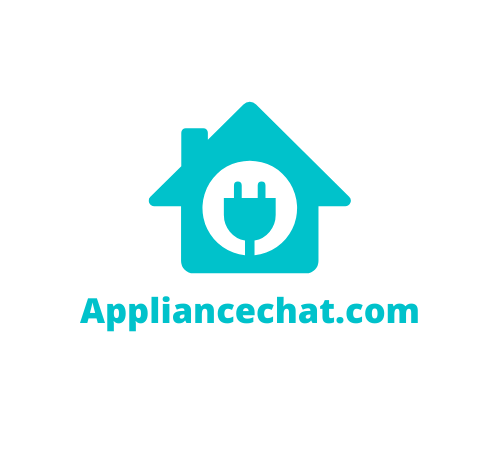Are you experiencing issues with your Kenmore fridge not cooling properly?
If so, you’re not alone. This is a common problem that many homeowners face, but thankfully, it’s not impossible to fix.
There could be several reasons why your Kenmore fridge isn’t cooling properly, and we’ll explore some of the most common ones below.
Kenmore Fridge Not Cooling (Troubleshooting)
Most common reasons why Kenmore fridge not cooling is incorrect temperature settings, dirty condenser coils, a faulty evaporator fan, or a faulty thermostat.
So, let’s dive into troubleshooting the Kenmore fridge not cooling.
1. Check for Power Supply
Before diving into complex troubleshooting, make sure the refrigerator is actually receiving power.
Check if the power cord is plugged in securely, and the circuit breaker or fuse that powers the outlet is not tripped.
If the fridge’s display or interior lights are not functioning, this might be a power supply issue.
2. Verify Temperature Settings
Sometimes the temperature control settings might have been accidentally adjusted, leading to improper cooling.
Consult your fridge’s manual to determine the recommended temperature settings for the freezer and refrigerator compartments.
Adjust the settings if needed and wait for a few hours to see if the cooling improves.
Connect with an Appliance Repair Technician
Click here to use the chatbox to speak with one of our skilled technicians
No in-home service calls. No appointments.
3. Inspect the Condenser Coils
Dirty or clogged condenser coils can hinder proper heat exchange and cooling.
Locate the condenser coils, usually located either at the back or underneath the fridge.
If they are covered in dust, debris, or pet hair, use a vacuum cleaner with a brush attachment to gently clean them. This simple step can often restore cooling efficiency.
4. Ensure Proper Air Circulation
Blocked vents inside the fridge or freezer can prevent proper airflow and cooling.
Make sure there are no obstructions around the vents, and items are not blocking the airflow near the evaporator fan.
Allow some space between items to ensure proper circulation of cold air.
5. Check the Evaporator Fan
The evaporator fan is responsible for circulating cold air throughout the refrigerator.
Open the freezer compartment and listen for the sound of the fan running.
If you don’t hear anything, the fan might be faulty.
You can also check by holding a piece of paper near the vent; if the paper is not pulled toward the vent, the fan might not be working.
Connect with an Appliance Repair Technician
Click here to use the chatbox to speak with one of our skilled technicians
No in-home service calls. No appointments.
6. Inspect the Condenser Fan
The condenser fan, usually located near the compressor at the back of the fridge, helps dissipate heat from the condenser coils.
If this fan is not functioning, it can lead to inadequate cooling.
Listen for its sound and ensure it’s running when the compressor is active.
7. Check the Compressor
The compressor is the heart of the cooling system. If it’s not working, the Kenmore fridge won’t cool properly. Listen for a humming sound, which indicates the compressor is running.
If you don’t hear any noise from the compressor, there might be an issue with the start relay, capacitor, or the compressor itself.
This is a complex component and might require professional assistance to diagnose and repair.
8. Test the Thermostat
The thermostat controls when the compressor and fans should run to maintain the desired temperature.
If it’s faulty, it might not signal the cooling components properly. You can use a multimeter to test the continuity of the thermostat. If it’s not working, replace it.
9. Evaluate the Refrigerant Level
A refrigerant leak can lead to cooling problems. If the cooling coils are not properly filled with refrigerant, the fridge won’t cool efficiently.
This is a complex issue and should only be handled by a licensed technician as it involves working with refrigerants.
10. Call for Professional Help
If none of the above steps resolve the issue, it’s time to call a professional appliance repair technician.
Some problems, such as refrigerant leaks or compressor failures, require specialized tools and knowledge to fix.
Attempting complex repairs without proper expertise can lead to further damage and safety hazards.
In conclusion, a Kenmore fridge not cooling can be caused by various factors, ranging from simple issues like dirty coils to more complex problems like compressor failure.
By following this troubleshooting guide, you can identify and potentially resolve many common cooling problems.
Remember, if you’re unsure about any step or if the problem persists, it’s always best to seek professional help to ensure a safe and effective resolution.
Final Thoughts
In conclusion, if your Kenmore fridge is not cooling properly, there are several things you can check to troubleshoot the issue.
By checking the temperature settings, condenser coils, evaporator fan, thermostat, and compressor, you can pinpoint the problem and take the necessary steps to fix it.
If you’re not comfortable doing it yourself, it’s always best to call a professional to help you out.
Connect with an Appliance Repair Technician
Click here to use the chatbox to speak with one of our skilled technicians
No in-home service calls. No appointments.
Related Articles
- Kenmore Elite Fridges Problems: 7 Common Issues (Must Read)
- Plumbed Fridge Better? (Simple Answer)
- Kenmore Elite Fridge Filter Not Working (Answered)
References
- Image by wayhomestudio on Freepik

